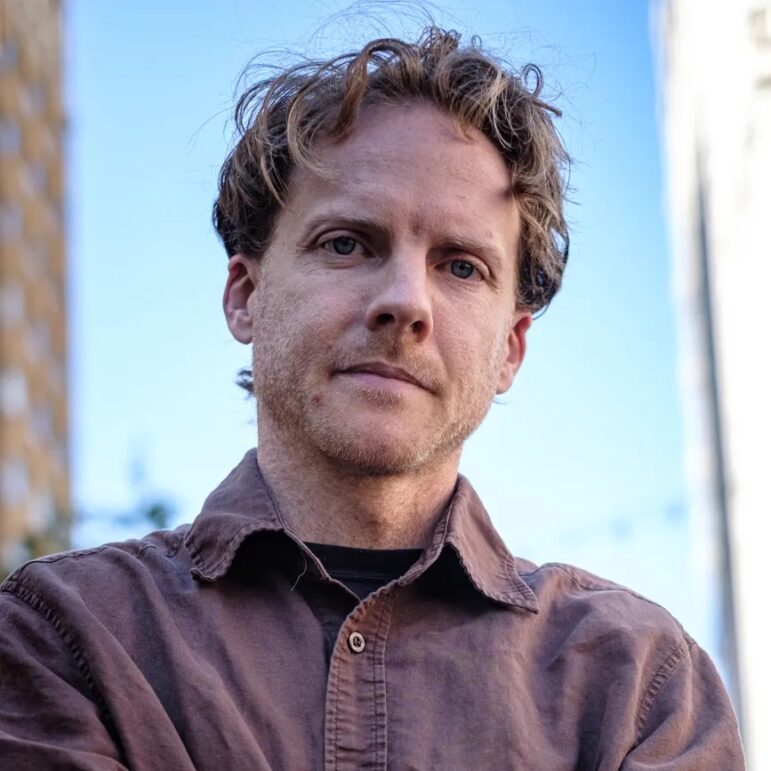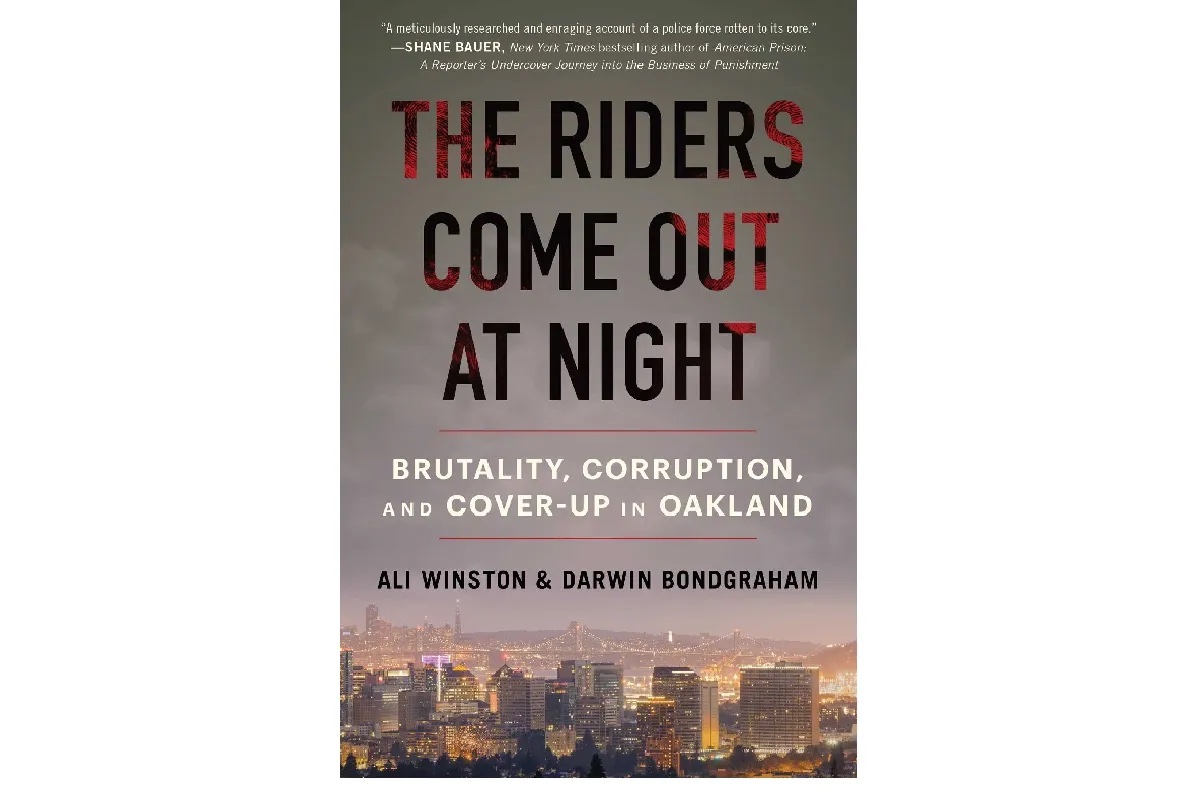Like any region in the United States, the Bay Area has its myths. Some are self-anointed, like the local penchant for art, activism and innovation. Others are thrust upon it, like the so called-”dangerous,” ballooning unhoused community, drug networks and “crime” with a capital C. But for all the pomp Bay Area media likes to make about its appetite for progress, lawmakers consistently have approached crime with an exasperatingly boring solution: more money for more cops.
The police budgets for San Francisco, San Jose and Oakland alone total over $1.5 billion for a population of about 2.2 million; by comparison, the Los Angeles Police Department budget of $1.9 billion is meant to serve approximately 3.8 million people. But as very recent history (let alone history at large) indicates, the police have never been invested in, or all that capable of, making the Bay Area safer.
In their book, “The Riders Come Out at Night” (Atria Books, January 2023, $30) longtime Bay Area-based investigative reporters Ali Winston and Darwin BondGraham, who have written for everyone from the East Bay Express to the New York Times, exhume the worst offenses the Oakland Police Department has committed in the last century, and their innumerable attempts to hide them. For 20 years, OPD has been under a Negotiated Settlement Agreement, a court-ordered reform plan with federal oversight meant to keep the department accountable and enact enduring ethical improvements. Thanks to recent changes in public records laws, a lawyer willing to work pro bono and decades of trusted sources, the authors’ distressing chronicle leaves no stone of racism, fraternal protections untruths and failures unturned.

Darwin BondGraham (Courtesy Pete Rosos) 
Ali Winston (Courtesy New York Times)
The NSA resulted from a lawsuit filed at the end of 2000 that eventually was consolidated with several other similar cases in the following year, Delphine Allen et al. v. City of Oakland. Nearly 120 plaintiffs had alarmingly similar encounters with a group of officers, the “Riders,” who for years in the 1990s and early 2000s openly harassed, framed, planted evidence on, assaulted, and at times, killed civilians. They were lauded as exemplary members of the force, snuffing out criminal behavior and helping the OPD meet its crime reduction goals. The book covers not only the scope of this foundational scandal and its reverberations, but also the beams and bolts of Bay Area police practices that built the culture that persists today.
Don’t hold your breath—there is no truly happy ending here. Anyone living in Oakland today knows how little public-facing change has transpired without even breaching the book’s cover. “Still, the police remain unreformed,” the authors write in a brief prologue, before dropping readers, like a rookie straight out of the academy, on the street.
Keith Batt had all the markings of a cheery sitcom cop: young, clean-cut, from Sebastopol, and an exemplary police academy student eager to help protect the people of Oakland. But policing, as his superiors said at the time, isn’t taught in the classroom—it was “physical, ugly and dangerous.” His field training officer, Clarence “Chuck” Mabanag was “openly contemptuous” to treating any suspect with respect, let alone abiding by their constitutional rights. Barely hours on the job, Mabanag harasses a civilian and coerces Batt into falsifying a police report. Within a week, Batt witnesses the killing of a restrained dog during a search warrant response. With the dog began the slow death of Batt’s faith in the “high school football team’s inner sanctum” he joined.
He would only make it a couple weeks on the force, witnessing Mabanag and his fellow “riders” Frank Vazquez, Jude Siapno and Matthew Hornung terrorize Oakland residents and falsify paperwork to cover their trespasses, before he quits and blows the whistle.
This is perhaps what makes the Riders case so distinct in over 150 years of crooked policing: that one of their own would be the one to sound the alarm.
But even when the call is coming from inside the house, the house fights back. Winston and BondGraham do not laud Batt’s actions as heroic, nor does his disclosure ameliorate into “justice” beyond the Riders losing their OPD jobs—none were convicted of the dozens of atrocities they were proud to discuss behind “the blue wall of silence” (Vazquez, by far the most sadistic, fled the country). Batt’s statements lead to threats on his life and a transfer to a different police department. The case against the Riders became an ouroboros of blame that ultimately ended in two mistrials over bad decisions coming from well-meaning cops “just following orders.”
After the first few chapters detailing how the Riders imposed their hell on Oakland and shape their defense, Winston and BondGraham use the next third of the book to pose the question: whose orders? As they pull back in time and scope on Oakland’s history of policing, the Riders’ manifestation and unchecked sadism seems inevitable. “OPD leadership encouraged violence and corruption,” they write, to control anyone who “upset the city’s image of itself as a pious, middle-class, Anglo-Saxon settlement.” In Oakland’s early years, this meant Chinese immigrants, labor unions and other white ethnic groups, though Chinatown and its residents suffered the worst of it. With the 20th century came an infiltration of Ku Klux Klan members into police uniforms to harass Jewish and Catholic communities, but the great migration of Black Americans into Oakland gave OPD it greatest and most enduring cause: “enforcing white supremacy against Black people.”
The Black Panther Party and contemporary organizations like the Anti-Police Terror Project thus appear like a natural response in the face of murder, harassment and intimidation.
These middle chapters feel less immediate without the direct testimonies and interviews with lawyers, activists and even Keith Batt, but they color in the Riders’ professional forefathers that took advantage of deindustrialization, the wars on crime and drugs, and unchecked bigotry to pave the way for them. The authors use the final third of the book to connect these past transgressions to more recent impropriety, some of which they reported on the ground.
Not every officer reaches Rider-levels of cruelty, but many skirt protocols for evidence, use unnecessary force, and accept the supposed powers that be. Among local history beats covered are Huey Newton’s rise as a civil rights leader and eventual embrace of many aspects of gang culture that deviate from the Black Panthers’ original goals. The exposure of Your Black Muslim Bakery’s Yusuf Bey and his successors as cultish sexual predators and fraudsters and Jerry Brown’s pivot from Berkeley leftie to “tough on crime” Oakland mayor further illustrate OPD’s dysfunction as a chronic condition.
These are far from the only, or worse, transgressions that Oakland police have committed. They mention, of course, the murder of Oscar Grant at Fruitvale Station, and more recent multi-department scandal circa 2016 that the authors themselves broke, where a cop’s suicide note revealed that many cops had knowingly committed statutory rape with “Celest Guap,” who was 17 and 18 at the time. What is even more disturbing is how many other names and stories the authors include that did not get national attention, that do not get chanted over and over at the big rallies. Local officials are quick to blame these events as bad apples and rogue behavior, but Winston and BondGraham prove that they aren’t: the police, be they in the Bay or across the country, do bad things because they serve the interests of bad people in power and bad policies.
“The crisis of policing is a crisis of governmental legitimacy,” the authors write. The federal consent decree that remains give OPD a consistent vigilance that has helped activists and journalists like the authors continue to press and dig for more, but a cycle has emerged: “policies were rewritten, officers retrained and the monitors packed up and left,” they write, only to have new monitors try again when new scandals arose.
“None of this is to say that the OPD is the same department it was during the Riders years,” the authors write in their conclusion. Change is possible, yes, and evident in new policies, new staff, and a culture that does not permit such blatant violence and disregard for citizens. But ultimately, police are “the repressive, coercive power of the state embodied in an armed officer.”
True police reform can only come with a reform of local, state and federal governments who “subject a society’s poor and racially oppressed to violence, surveillance, and harassment” to keep the ruling class insulated. Winston and BondGraham paint a meticulous picture of how OPD, and by extension law enforcement departments across the country, got here. They also warn that without a permanent solution, they are doomed to fall back into the same bad habits that calcified their existence.

This should be required reading for Oaklanders, although OPD history will make you want to puke. Now I understand where and why there is so much distrust among the black community. Although I lived here all my life, I did not know the extent the police mistreated and abused so many. Make no mistake this is a hard read and you might have to digest it slowly but I strongly suggest you read this book.